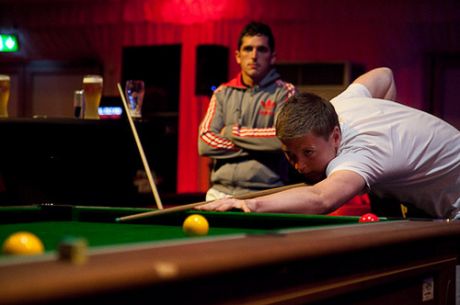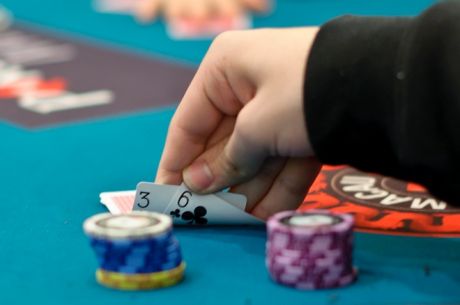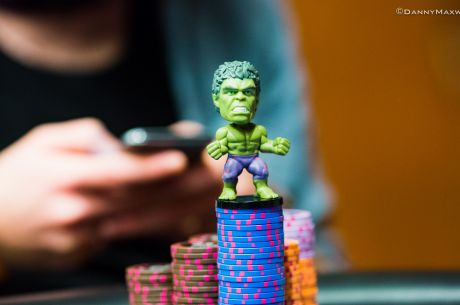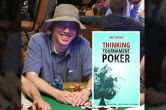A Simple Bluff: Analyzing an Early-Level Tournament Hand
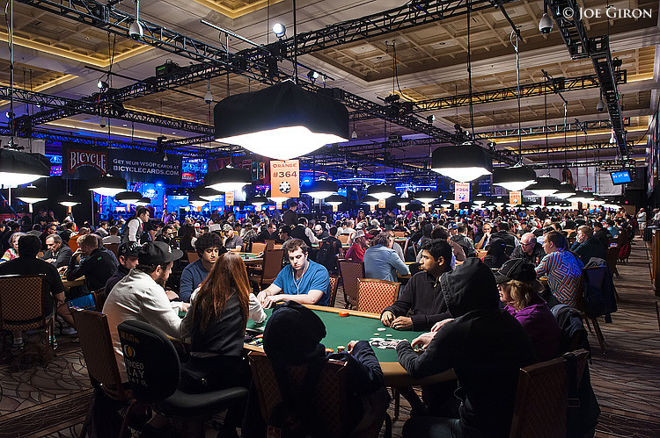
Maturing as a poker player means, among other things, learning not to treat hand-reading as a divination process where you assign one exact hand to the opponent. Very often, we are only justified in attributing a set of hands, or a ��range,�� to another player, and we have to act accordingly.
Developing the good habit of range-based thinking, however, can lead us to get rusty in spots where we really can put our opponents on a specific hand or a small set of closely-related hands. Sometimes it really is most useful simply to ask: What exactly does my opponent have, and what will he do with it?
I played such a hand on Day 1 of last year��s World Series of Poker Main Event. Although I routinely make mistakes in these situations, I think I got this one just about right.
It was the first level of the tournament, so the blinds were 50/100 (with no ante), and most players still had roughly the starting stack of 30,000. I raised from early position to 300. The next player to act called, and a middle-position player called also; the second caller only had 15,000 or so.
I was holding AxKx. The flop came 10x10x5x with no flush draw. I prefer to bet than to check in this situation, as I can fold out some six-out hands. I will occasionally get called by a hand I dominate, and betting represents enough strong hands that I cannot easily get raised.
Against some very strong players, I would check here with a lot of my raising range, because callers, and especially middle-position callers, figure to have trips or better as often or more often than I do. Because of that and the depth of the stacks, a player in position who has very good bluffing frequencies will exploit my bet here. In the first level of the Main Event, though, there��s not much need to worry about that.
I bet 425 into the pot of 1,050. On this dry board, you don��t need a big bet to fold out plenty of unpaired hands, and perhaps also to cause some small pairs to fold. I would make the same bet with a good overpair. The first caller folded and the middle-position player �� the one who was down to about half the starting stack to begin the hand �� called.
Here is where the hand got easier. I gathered the evidence about the middle-position player. He...
- had been talking to a railbird for fifteen minutes and paused only to play this hand;
- seemed not to have any choice but to play his hand before the flop (perhaps he would have preferred to keep talking);
- gave no thought to reraising before the flop;
- gave no thought to folding on the flop;
- gave no thought to raising on the flop.
Players who appear not to be considering alternative actions are sometimes faking, but in my experience, lots of players are bad at faking whether they really have decisions to make (and that��s equally true whether they��re trying to conceal the ease or difficulty of their decisions). Here I trusted that this player��s apparently easy decisions were, in fact, easy. (Easy from his point of view, at least.)
I decided he almost certainly had a medium pocket pair �� 8x8x, perhaps. With a hand like JxJx he would have considered reraising preflop, or at least he would have seemed a little more excited about playing. If he hadn��t had a pair, or if he��d had trips or a full house, he would have had a tougher decision on the flop.
The turn was another 10x. Rather than thinking about my best line against a perfect computer, or against a range that included not only pairs but also AxQx and 6x5x-suited, I simply asked myself: ��What��s the best play against pocket eights?��
I decided to check-raise. A passive line of checking and hoping he priced in my seven-outer was only a last resort, because I could represent a lot of good hands and my opponent was marked for a mediocre one. You shouldn��t give up on 19-big-blind pots when that��s the case. Betting out would not have been a bad play, especially if I were planning to bet the river also, but a better line was available.
This opponent seemed to be in ��straightforward mode.�� If I checked to him, he would figure that I could easily have big cards and would try to protect his vulnerable full house. Check-raising such a bet in this situation leaves your opponent in a bad spot for two reasons. First, the hand I��m representing has him drawing stone dead; second, it lets me threaten a much bigger fraction of his stack (going in to the turn, he had roughly 14,250 left and the pot was 1,900).
Finally, the overall context made this play even more effective. Most players don��t want to leave the Main Event early, and especially not by losing 10,000 of their chips putting in 100 big blinds with unimproved eights against an early position raiser during an interruption in a conversation with a railbird.
I checked, he bet 700, I made it 1,850, and after 10-15 seconds he folded. Looking back, a slightly larger raise would be better, I think. A raise to 2,400 would threaten significantly more of his stack and still leave me a reasonable price on the check-raise.
The most important thing about this spot, however, is to recognize how good you have it when you can represent a hand stronger than your opponent��s and when he will have little choice but to trust you.
Thinking Tournament Poker by Nate Meyvis is now available both at Amazon and at nitcast.com. Be sure also to check out Nate and Andrew Brokos on the Thinking Poker podcast, and for more from Nate visit his blog at natemeyvis.com.
Want to stay atop all the latest in the poker world? If so, make sure to get PokerNews updates on your social media outlets. Follow us on Twitter and find us on both Facebook and Google+!

